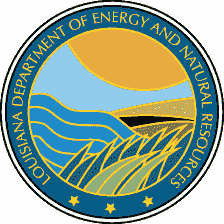Top Stories
Beneficial Use Regulations Maximize Resources Dedicated To Coastal Protection
Today, Louisiana Department of Natural Resources Secretary Scott Angelle and the DNR Office of Coastal Management (OCM) announced that improved rules on the beneficial use of material dredged in projects requiring a coastal use permit have improved the percentage of qualifying projects that provide material or funding for coastal protection.
Beneficial use refers to taking material dredged for a project and using it to help build or protect coastal wetlands. The intent of the new rules is to ensure as much material as possible from dredging projects under state regulation is put to that beneficial use.
The beneficial use rules apply to any project requiring a state coastal use permit that involves dredging 25,000 cubic yards or more to facilitate the movement or mooring of vessels.
The total amount of material in eligible projects has amounted annually to about 3 million cubic yards, but logistical impediments and other issues meant only about 22 percent of it was put to beneficial use under Coastal Management rules in place until late 2009.
Rules adopted and made public in late 2009 have succeeded in achieving the goal of 100 percent of qualifying dredging projects providing resources for coastal efforts – either in dredged materials or funding contributions to the coast.
Recognizing a need for more options and greater flexibility to capture more resources, DNR Secretary Scott Angelle directed Assistant Secretary Lou Buatt to develop rules that would provide for a greater percentage of dredged material providing a benefit to Louisiana’s coast.
“It is critical that we make full use of every available resource and continually seek new ways to add to the assets needed to strengthen our coast,” Angelle said. “The flexibility offered in our beneficial use rules helps balance the needs for development and for protection of our coastal zone in a manner that strengthens both.”
The rules for beneficial use adopted by the Office of Coastal Management in 2009 include four options for permit applicants involved in coastal projects that include dredging – implementing a project that makes beneficial use of the dredged material, providing for the use of the dredged material on an approved coastal restoration project, using dredged material at another location that creates the same amount of beneficial use, or making a voluntary contribution to the Coastal Resources Trust fund, based on the amount of material dredged.
One of the most significant changes to the beneficial use rules was allowing in-lieu contributions instead of direct use of the dredged material for projects where direct use of the soil on beneficial coastal projects is not feasible due to quality of soil or the expense of transportation. This also allows several smaller projects to make contributions to the Coastal Trust Fund that can be combined to fund larger projects.
The in-lieu option alone created the opportunity for the coast to benefit from 14 dredging projects involving nearly 370,000 cubic yards of soil – bringing in $415,000 to the Coastal Resources Trust Fund in situations where the old rules might have meant no resources could have been direct to the coast.
“Those 14 projects could have been missed opportunities, but instead are adding to the pool of resources the state can draw from in combating the forces that are costing us coastal wetlands,” Buatt said.
Beyond the in-lieu contributions, beneficial use rules offer three other options for permit applicants involved in coastal projects that include dredging – implementing a project that makes beneficial use of the dredged material, providing for the use of the dredged material on an approved coastal restoration project, or using dredged material at another location that creates the same amount of beneficial use.
Buatt said that the old rules created permitting delays because of the difficulty of meeting the requirement of the limited allowable options, but OCM staff aggressively sought to remove those delays in the crafting of the current beneficial use guidelines.
Windell Curole, general manager of the South Lafourche Levee District, said the new flexibility in beneficial use rules means a reduction in potential to wasted critical coastal resources.
“Beneficial use is one of the best ways to support the preservation of what we have left in our coastal areas,” he said. “DNR’s effort in maximizing that will continue to pay dividends for coastal protection for years to come.”
Ted Falgout, retired executive director of Port Fourchon, said that he hopes to see the state build on the early success of the effort to broaden beneficial use of dredged material.
“It’s a worthwhile effort and hopefully one that will set the stage for even greater opportunities to bring resources to bear on our coast,” he said.
Angelle added, “Windell and Ted were both instrumental in working to develop this public policy. We owe the success of this program to their input and guidance.”
Buatt said that the strong response in the first year of implementation is encouraging, but that much more work must be done to maximize potential resources that could be dedicated to the coast.
He said that DNR is continuing in its effort to improve the percentage of dredged material from U.S. Army Corps of Engineers navigation projects that is targeted to strengthening Louisiana’s coastal zone and protecting the lives and homes of it citizens, and a significant part of the nation’s shipping and energy infrastructure.
News Archives »
